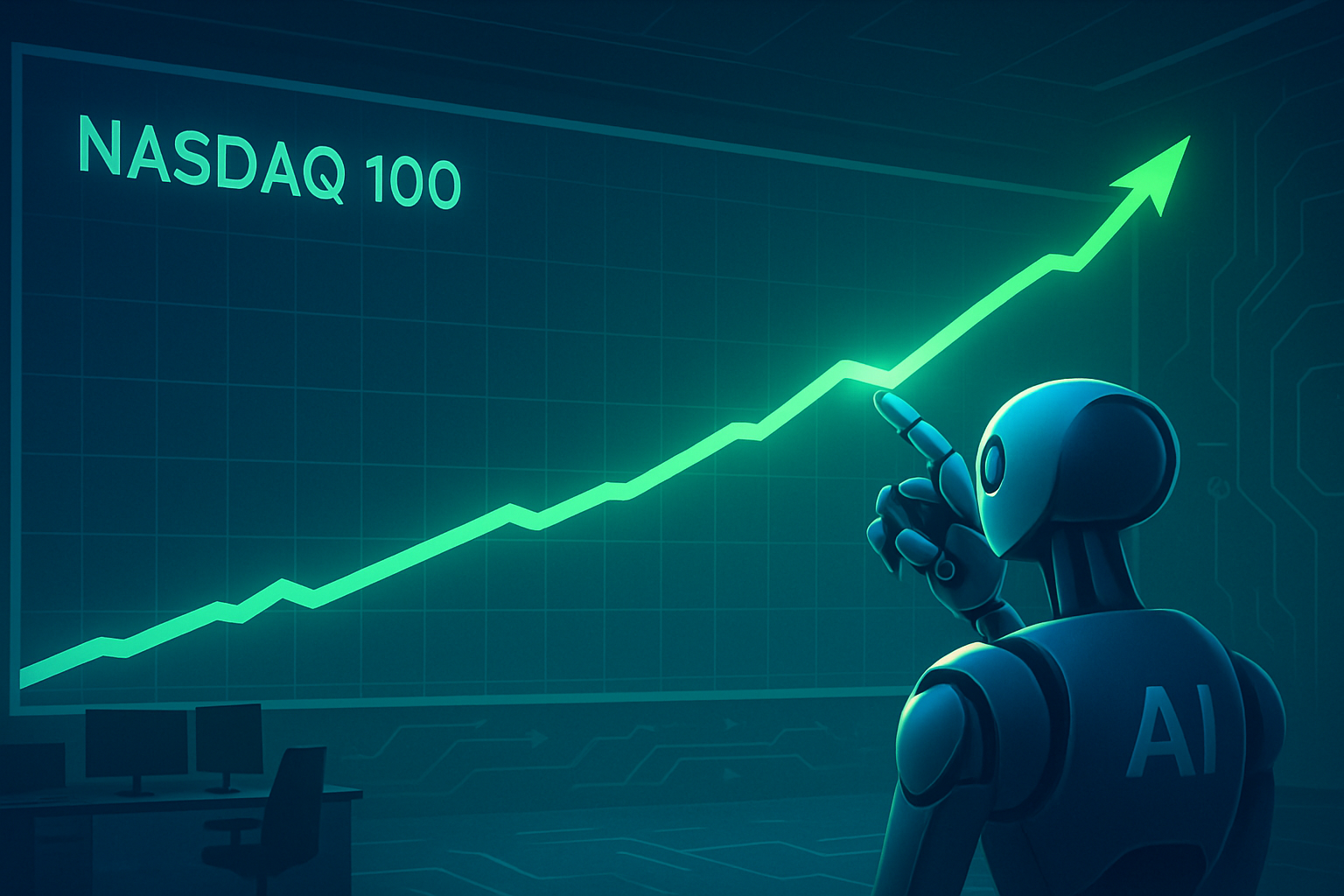The Nasdaq 100 has tripled from its COVID lows. Just sit with that fact for a minute.
In roughly four years, we've witnessed one of the most remarkable bull runs in modern market history—a pandemic panic transformed into what can only be described as a tech-fueled rocket ride that has investors both giddy and increasingly uneasy.
And who could blame them? We're currently experiencing the longest stretch without even a modest 5% pullback that I've seen in my fifteen years covering markets. It's downright unnatural.
The standard explanation makes enough sense on paper: tech earnings have been phenomenal. Apple, Microsoft, Nvidia and the usual suspects have delivered quarter after spectacular quarter. Their numbers justify the valuations... if you tilt your head and squint just right, anyway.
But there's more to this story.
What's been gnawing at me lately (and I've discussed this with several fund managers who share the concern) is the role of algorithmic trading in this suspiciously smooth ascent. Markets aren't supposed to climb in near-straight lines—they zigzag, they breathe, they occasionally throw tantrums. Yet here we are.
I've started thinking of this as an "algorithmic feedback loop." It works something like this: AI-powered trading systems identify upward momentum, buy accordingly, create more momentum, which triggers more buying. Lather, rinse, repeat.
These algorithms don't give a damn about traditional valuation metrics. They don't lose sleep over geopolitical tensions or Fed policy. They care about patterns—and brother, the pattern has been crystal clear.
This creates a fascinating paradox. The very technologies designed to make markets more efficient might actually be introducing a novel form of irrationality. Not the fear-and-greed cocktail humans typically serve up, but something more subtle and potentially more troubling: momentum divorced from fundamental reality.
Look, I'm not saying the rally lacks legitimate underpinnings. Tech earnings have been genuinely impressive. The AI revolution—unlike so many overhyped tech "revolutions" I've covered since 2008—appears to have real substance.
But the eerie smoothness of this climb? That defies historical norms and basic market physics.
Which brings us to the question that haunts many veteran investors I speak with: what happens when we finally get that inevitable 5-10% correction? If algorithmic trading has amplified the upside (and I believe it has), won't it similarly magnify the downside?
The mechanics aren't complicated. When momentum finally reverses, these same algorithms will likely accelerate selling pressure. Those technical signals that have flashed "BUY!" for months will flip to "SELL!" with machine-like efficiency. And that same feedback loop could operate in reverse—with potentially gut-wrenching speed.
It reminds me a bit of portfolio insurance back in 1987—a quantitative risk management strategy that helped turn a garden-variety correction into Black Monday when everyone tried to execute the same strategy simultaneously. Today's algorithms are vastly more sophisticated, but the fundamental problem remains: when everyone rushes for the exit at once, that doorway suddenly looks mighty narrow.
This isn't a prediction of imminent doom. Markets have been making skeptics look foolish for years now, and timing tops is a mug's game. I've been humbled enough times to know better.
But there's a reason why the most battle-scarred investors get nervous when things seem too easy, when volatility disappears for too long. It's usually the calm before... something.
The irony is almost too perfect. We've created increasingly intelligent systems to navigate markets more efficiently, only to potentially introduce new forms of systemic risk. The algorithms designed to capitalize on human emotion may end up creating their own peculiar form of market panic—a panic of code rather than psychology.
For investors, this suggests keeping some dry powder might be prudent. When the correction comes—and history says it will, eventually—it could present buying opportunities that arrive and vanish with unusual speed. The same algorithmic forces that might exacerbate a downturn could reverse course just as quickly once technical levels stabilize.
In the meantime? Enjoy the ride, I suppose. Just maybe keep one hand near the emergency brake.
This market has been extraordinarily generous to those fully invested, but nothing—not even this seemingly unstoppable tech rally—continues indefinitely. Even the smartest algorithms eventually learn that trees don't grow to the sky.
